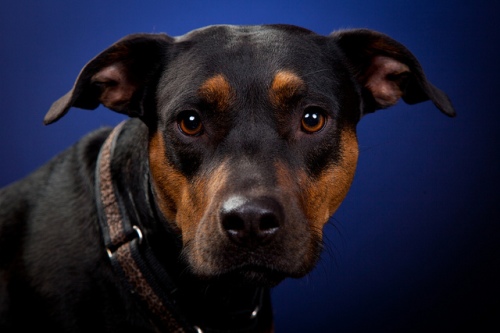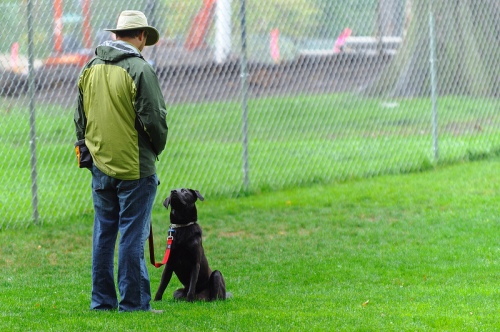Last week we discussed brittle dogs, those dogs who have a hard time coping with stress despite the best start in life. The dogs we discussed were born that way, and couldn’t deal with scary or uncomfortable situations even with their golden-spoon upbringing. But brittle dogs can also be created in spite of a solid genetic basis. Today, let’s discuss those dogs who don’t have the best start in life.
Some dogs lose the socialization lottery. Maybe your dog was born or raised in a puppy mill or kept in someone’s barn or garage. Maybe your dog was a stray. Maybe your dog grew up in a no kill shelter that didn’t have enough volunteers to get all of the dogs out and about or which kept puppies sequestered due to concerns about disease. Maybe you just didn’t know about the importance of socialization and so didn’t get your dog to puppy class before his socialization window closed between twelve and sixteen weeks.
Whatever the reason, if your dog missed out on critical socialization he may still be okay. Or he might not be. If you have a brittle dog whose early experiences were less-than-ideal, studies show that you could have a long haul ahead of you.
Ongoing studies on Romanian orphans have shown us just how crucial early development can be. The “socialization window” during which the majority of social brain development outside of the womb seems to take place appears to be about two years in people compared to the shorter three to four months for puppy development. However, many of the developmental processes are identical.
So, here’s what we know: children with neglectful upbringings do not develop the same way as children with supportive and enriched environments. Their brains are physically different. They develop less white matter, or myelin tract, which leads to deficits in their abilities to form neural connections. The neural pathways in their brain are weaker and the electrical activity of their brains is significantly reduced from children who grew up in supportive environments.
In addition to this alarming physical deficit, many of the children from neglectful environments also appear to suffer from adrenal impairment. Their bodies produce significantly less (or in fewer cases, significantly more) cortisol, a stress hormone, than other children’s bodies, and this causes them to show altered stress responses.
The parallels to our dogs who come from neglectful, unenriched environments are obvious. Many of the dogs with the very worst behavioral issues that I work with have low heart rates even in situations that obviously cause them a good deal of stress. These dogs sometimes appear to suffer learning disabilities and to have issues with impulse control. Their owners report that the dogs develop new fears at the drop of a hat, but that it takes months or years to get over any fear even with appropriate behavioral interventions.
Taking all of this in can be overwhelming to the owner of a brittle dog. If your dog’s history suggests developmental disabilities, it’s important to realize that your dog is not a normal dog. He has special needs. Asking your dog to suck it up and go to the dog park or to stop cowering behind the couch every time visitors come over dismisses the very real disability your dog lives with every day. It’s as insensitive as calling someone in a wheelchair lazy or laughing at the retired combat veteran next door when he asks you to please give him a head’s up before you light off firecrackers. We wouldn’t ask a dog who was missing a limb or an eye to engage in behaviors which were potentially dangerous to him, but because we cannot see the damage to the brain of our previously-neglected dog with our naked eyes we oftentimes forget to give him the same respect. It’s unconscionable to ignore a disability just because it’s not instantly visible.
So, how can you help your brittle dog? Once you acknowledge that your dog needs some special help, the research is very promising! There’s a lot we can do to help these dogs become more confident, happy, and behaviorally healthy with some simple interventions.
First of all, the five suggestions for brittle dogs with positive socialization histories apply here. Go review them now. We’ll wait.
Finished? Great! In addition to supporting your dog in all of the ways mentioned last week, research also suggests that you work to create new neural pathways for your pet. The brain is remarkably plastic, and new neural pathways develop anytime we learn a new skill or experience a new sensation. The trick is to do this without putting more pressure on your dog. Introducing your dog to TTouch obstacle work, agility (with a skilled instructor who will free-shape your dog to interact with the obstacles on his or her own terms), trick training, or canine nose work can allow them to interact with their environment in new and interesting ways. Feeding from puzzle toys or using other search and find games can also be helpful. Anything that engages your dog’s curiosity is good! Be patient and let him or her progress at the pace that makes sense for them. Encourage exploration and applaud small efforts.
The progress many of my clients see in their previously fearful dogs when we create safe places, actively teach coping skills, socialize appropriately, utilize classical conditioning, consider medication, and promote the development of new neural pathways through nose work or trick training is absolutely astounding. These dogs flourish in ways that they’ve never done before. They grow and they learn and they surprise the hell out of us at every turn. They impress us to tears. There’s nothing quite like the first moment when a fearful dog completes a successful search in nose work class or works up the courage to eat in the presence of a stranger. These magical moments of bravery show us how hard these special dogs try and how very much they can overcome with patience and a plan.
If you have a brittle dog, one of those special dogs who lost the socialization lottery, I hope this blog post has given you a better understanding of your dog’s very unique needs and a sense of hope at all that you can achieve together. I’d love to hear your stories, tips, and tricks about your own special dogs, so please share them in the comments section below!










